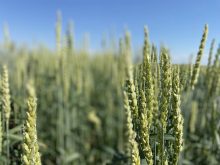Now that cattle are being put out to pasture and old-crop inventory is known, it’s important to review your cash flow projections and your marketing plans, says a provincial farm financial specialist.
“Cash flow projections are critical, especially in the summer months,” said Rick Dehod. “There isn’t much revenue coming in until harvest, but the farm’s operating expenses continue to accumulate and the bills have to be paid. A properly developed cash flow projection can help a business to both foresee and prepare for potential shortages, and to maintain a good relationship with suppliers and creditors.”
Read Also

Spring wheat plans remain unclear
While some experts believe durum could steal acres away from spring wheat in the U.S. this year, the seeding plans for Canadian growers still seems unclear.
Cash is the lifeblood of a business, but with so much emphasis usually put on profitability, this can be easily overlooked, said Dehod.
“Of course, the bottom line is important, but poor cash flow management can drive a growing and/or profitable company out of business.”
With profitability margins tightening due to decreasing commodity prices and increasing costs, the risk to the farm’s viability and its ability to meet all of its commitments as they come due has increased.
“The risk is especially great for those expanding farms and those individuals in the beginning of their careers who levered their equity to grow,” said Dehod.
Cash flow management can also help:
- Maintain adequate cash reserves to pay bills and payments on time or invest in expanding the business should an opportunity arise;
- Reduce interest costs through managed borrowing;
- Increase interest income by transferring surplus funds into interest-bearing accounts temporarily, if appropriate;
- Control costs by having the cash available to take advantage of buying inputs at favourable prices;
- Improve relations with lenders and creditors;
- Plan for the next crop year.
“Businesses that prepare cash flow projections often learn something about their systems, and the dynamics of their business,” added Dehod. “The process often has other positive outcomes as well. For example, you might discover that you need to pay more attention to markets to obtain the right price. Or, you might get a better understanding of your costs of production to help determine what a profitable price may be, and can then develop your 2016-17 marketing plan. For livestock producers, knowing your costs can help you access livestock price insurance to help protect your profit.”
For help with financial analysis, visit Alberta Agriculture’s website and search for ‘cash flow analyzer.’















